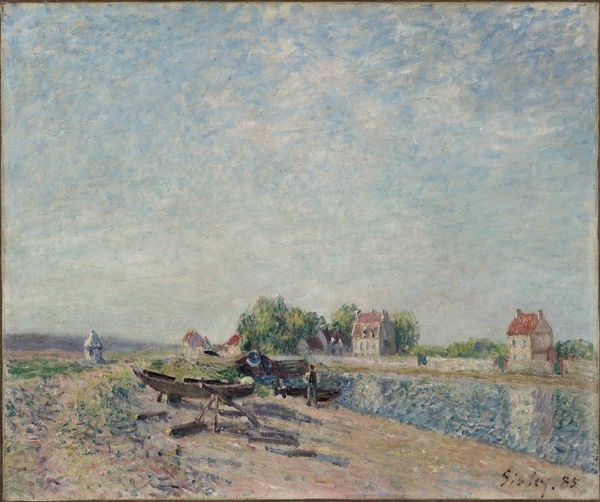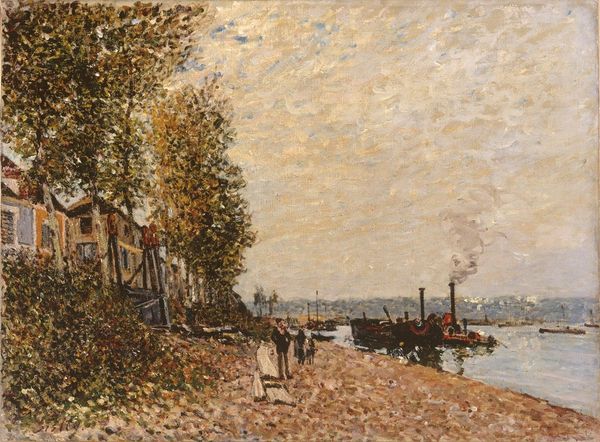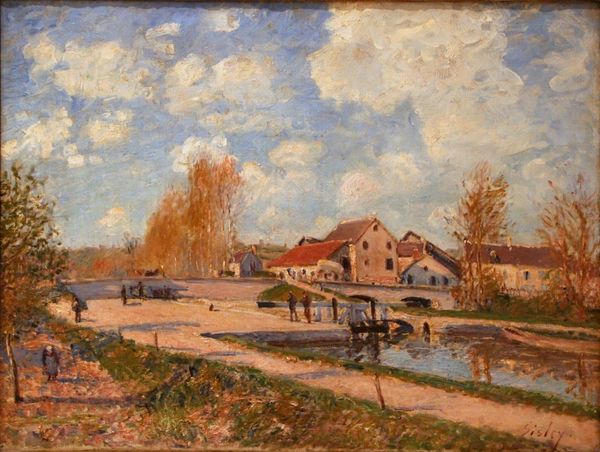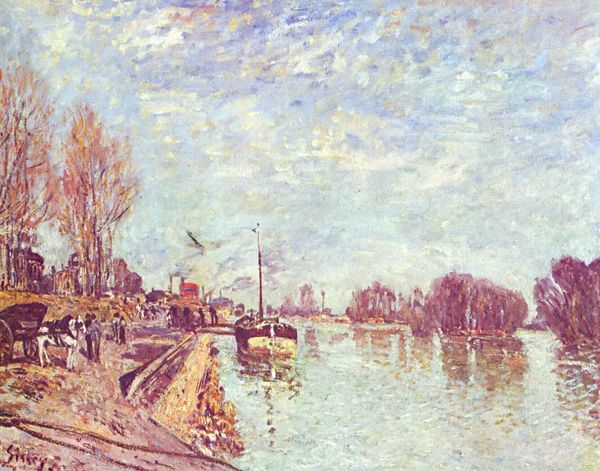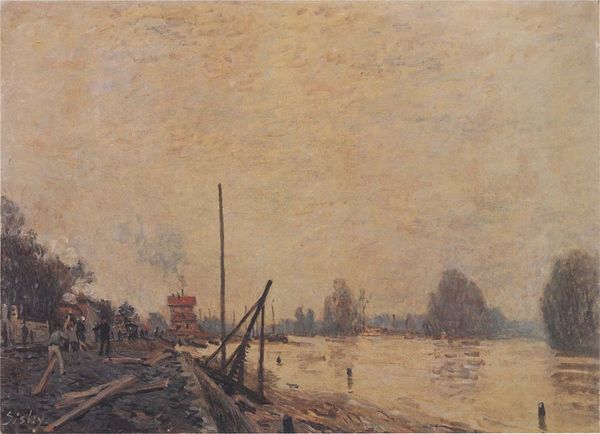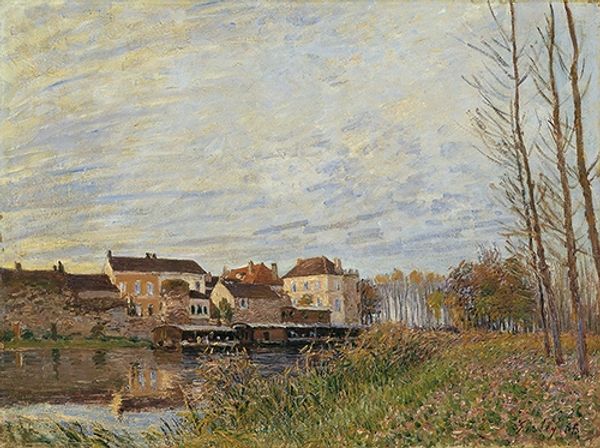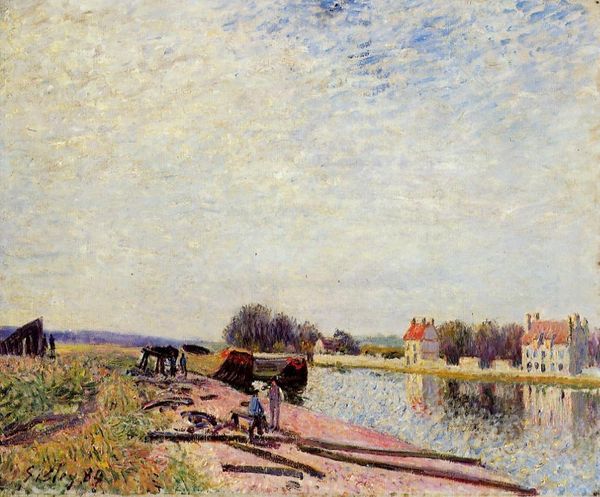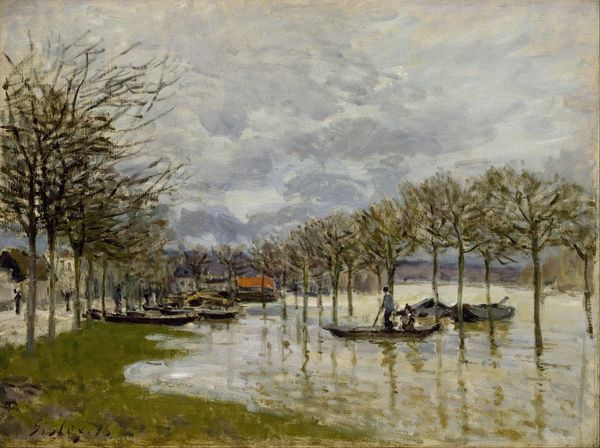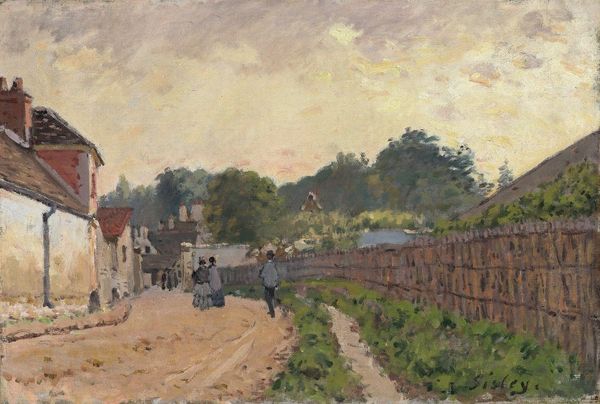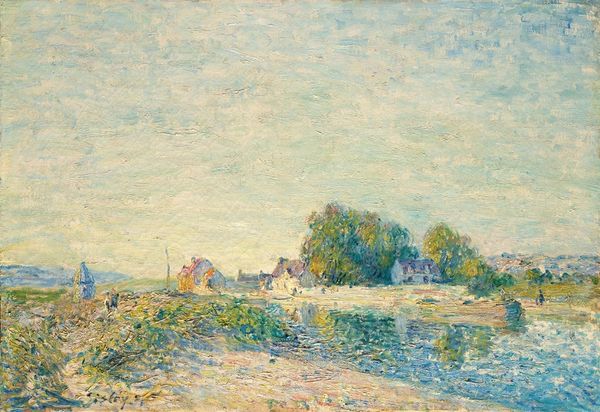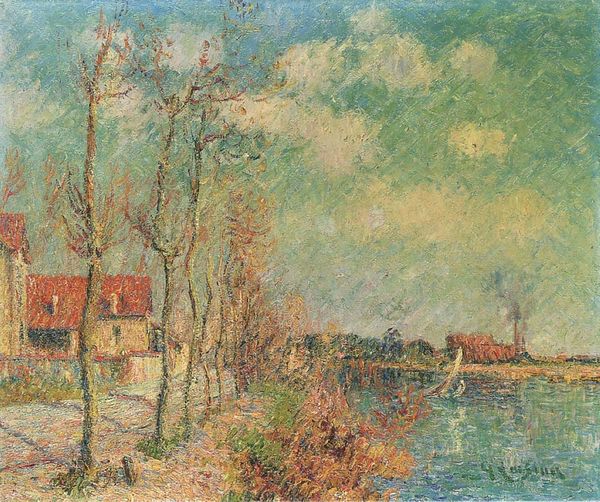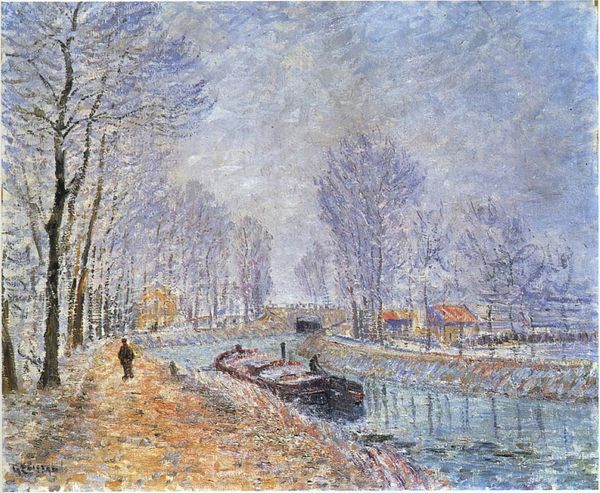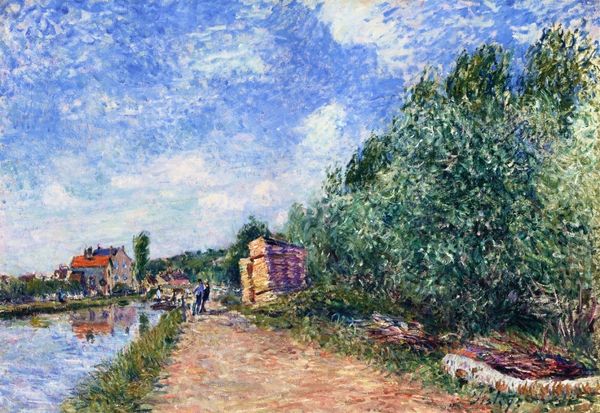
painting, plein-air, oil-paint
#
painting
#
impressionism
#
plein-air
#
oil-paint
#
landscape
#
oil painting
#
water
#
cityscape
Dimensions: 46.5 x 56.3 cm
Copyright: Public domain
Curator: Today we'll be discussing Alfred Sisley's "Barges at Billancourt," created in 1877. It currently resides in the Hermitage Museum. Editor: It strikes me as rather somber. The subdued palette and muted light lend a melancholic air to what might otherwise be a simple waterside scene. Curator: Precisely! The painting beautifully showcases the key elements of Impressionism: the concentration on light, atmosphere, and the ephemeral moment. Notice Sisley's brushstrokes; short, broken, and distinct. How do these compositional aspects support the overall scene? Editor: Well, Billancourt was an industrial suburb of Paris, and those smoking chimneys in the background hint at the rise of industrialization. There are few depictions of figures to offset what this transition means for labor. Does it romanticize labor, or acknowledge a potential dystopia? Curator: Good observation. Consider how Sisley handles color, or rather the lack thereof. He uses subtle variations in tone to depict light reflecting off the water, off of the trees. The muted hues enhance the sense of atmosphere. What relationship is constructed between light and water here? Editor: The limited color range reflects the pollution of the Seine, the very thing that enabled Parisian life and global transit, which enabled both capital and colonial exchange. Perhaps its seeming beauty belies an insidious entanglement with capital? Curator: An interesting connection! It might not necessarily be about glorifying it but rather Sisley representing life as he saw it through the lens of fleeting, everyday moments with acute attention to how things look rather than what things mean. The very "superficiality," if you will, may also contain a depth that exceeds interpretation and opens a new way of sensing, thinking and seeing the world. Editor: Still, the location itself tells a story. Impressionism wasn't created in a vacuum; it emerged within specific historical and social conditions. As we examine how paintings engage with society and historical context, we also learn more about ourselves. Curator: Perhaps art helps us better appreciate not just what it is, but how it affects the world. Editor: Absolutely. Understanding those connections allows us to look beyond the canvas.
Comments
No comments
Be the first to comment and join the conversation on the ultimate creative platform.
